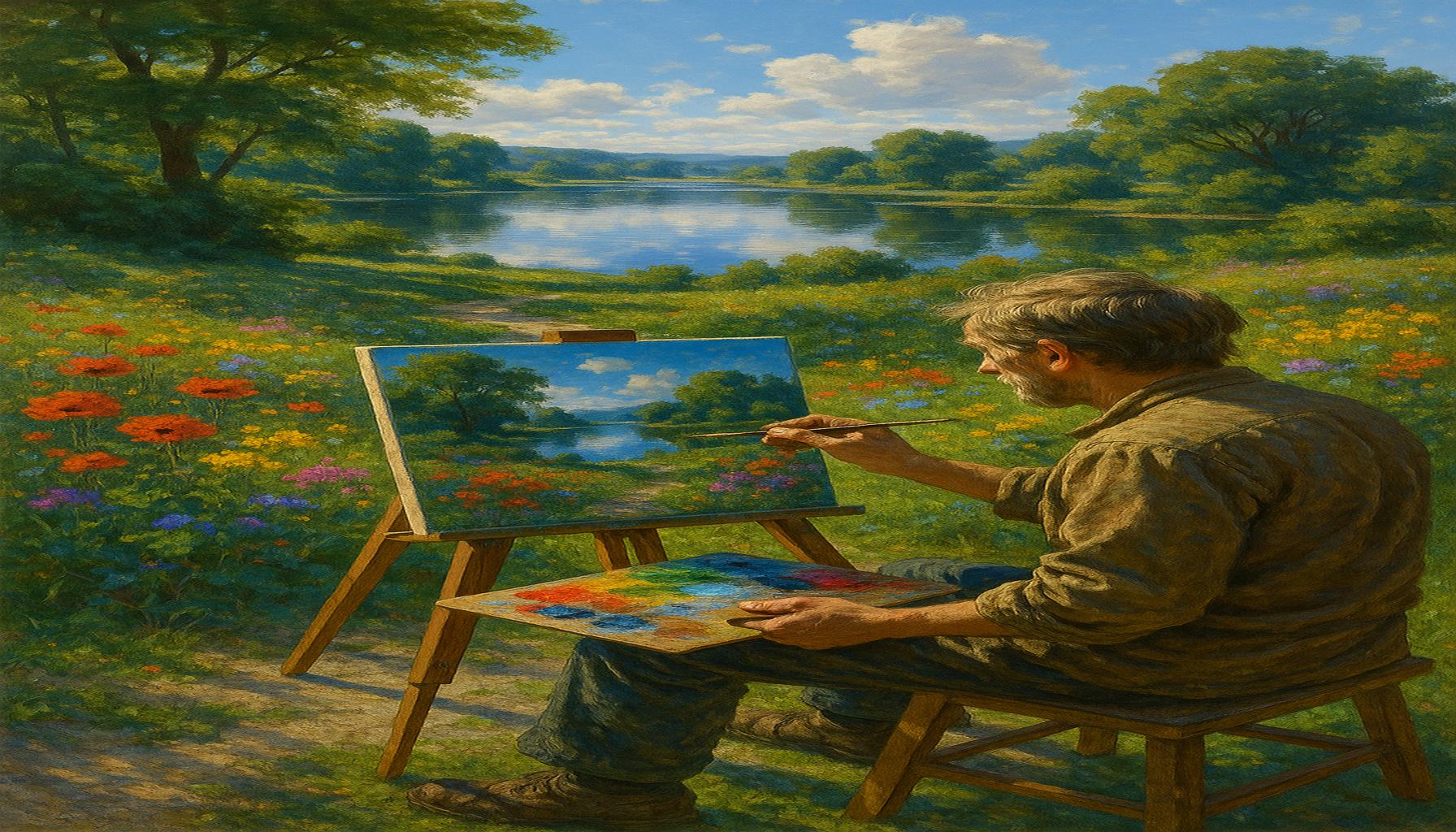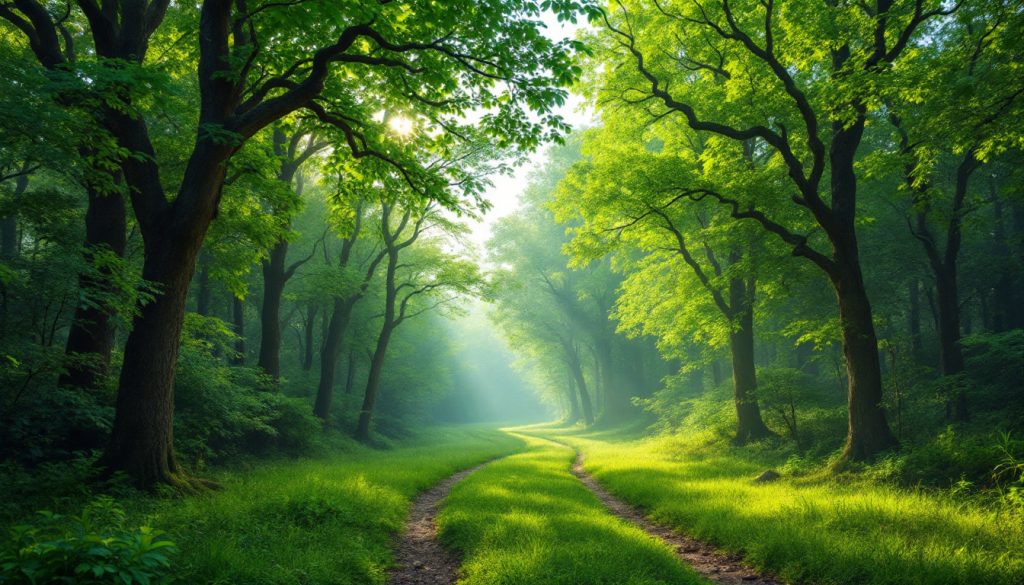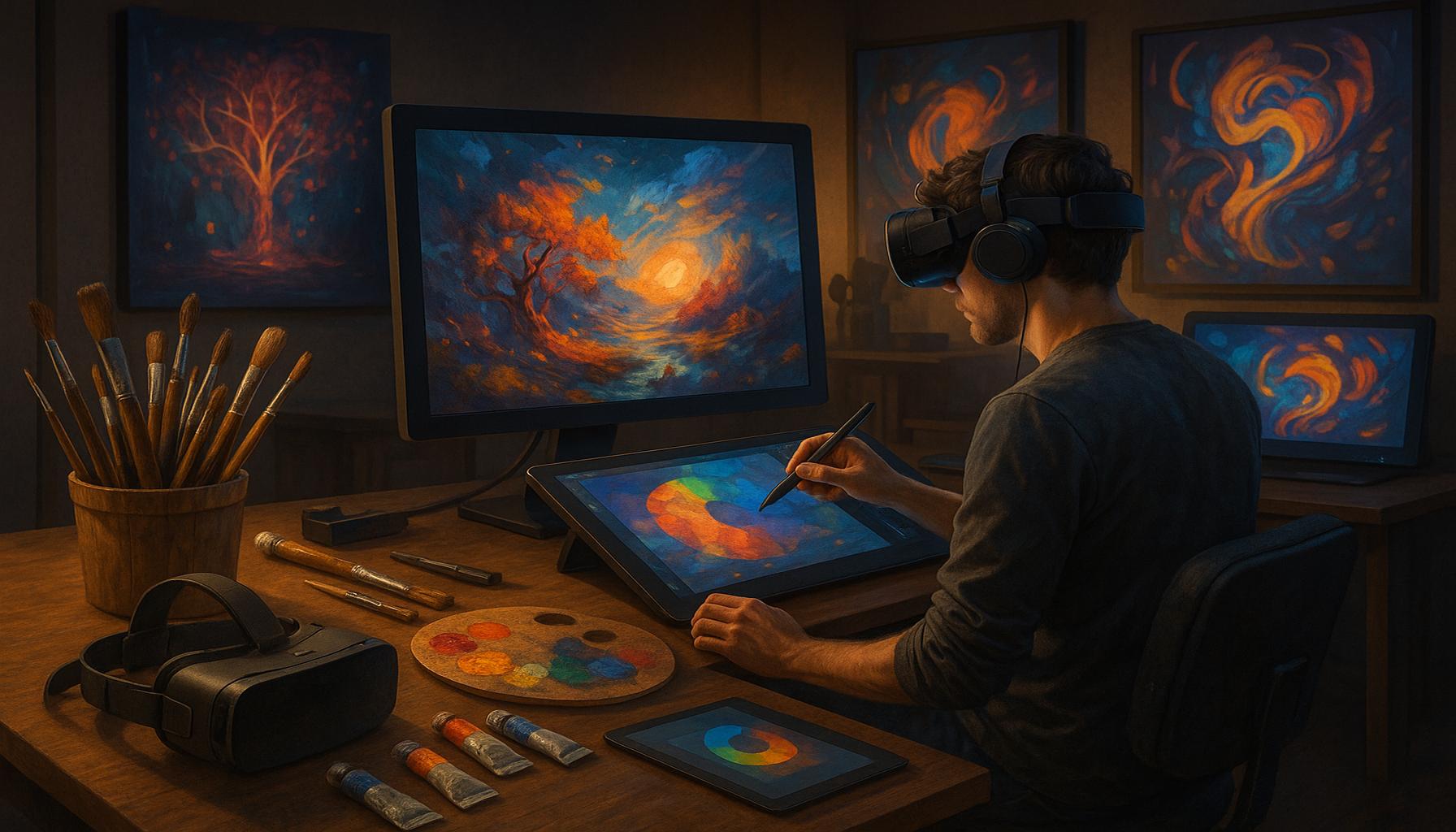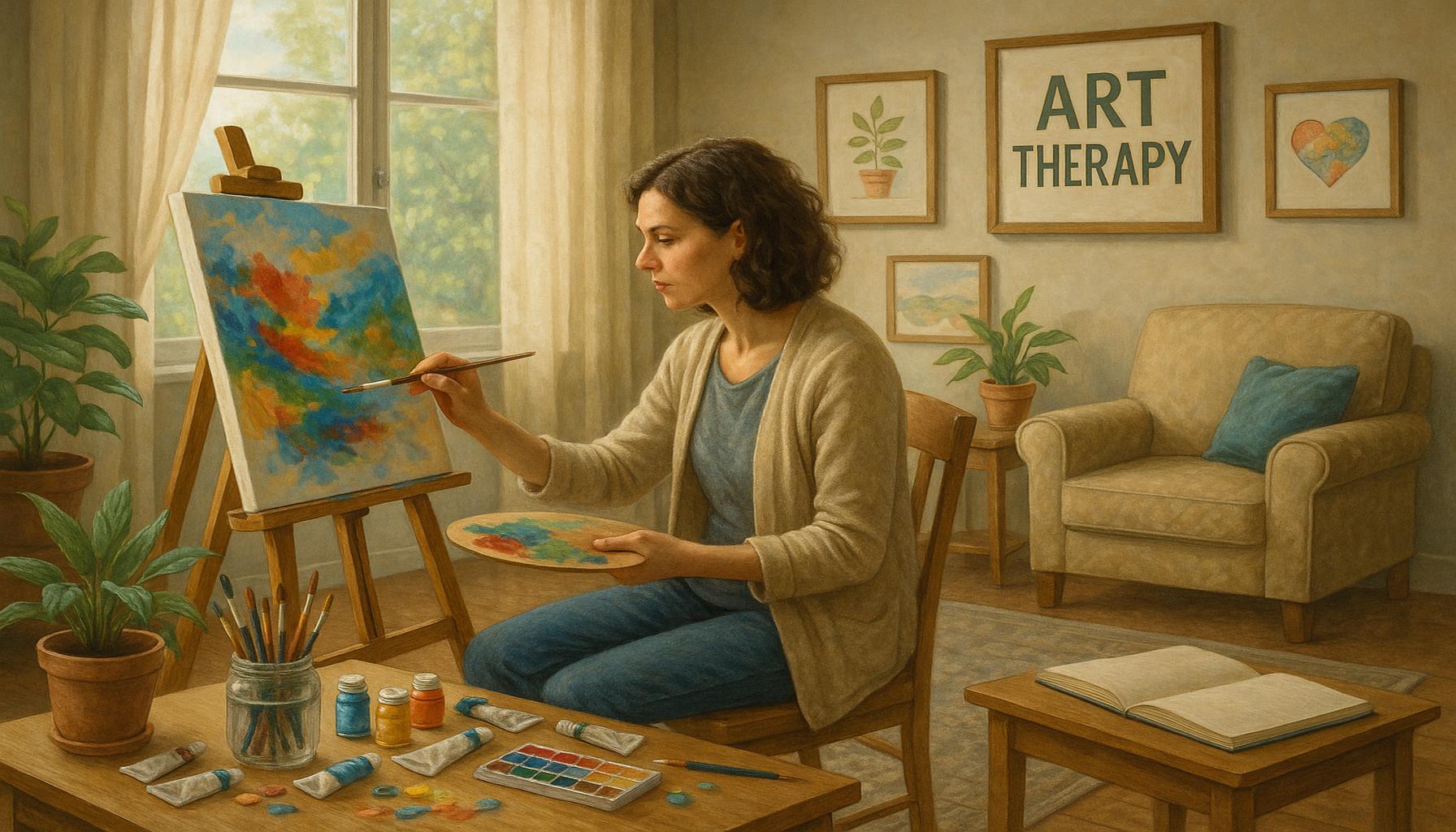Unlocking the Outdoors Painting Nature Artistic Expressions Bond

Art has always been a bridge between the creator and their environment, providing a profound connection to the world around us. Outdoor painting not only enhances this bond but also serves as an invigorating creative hobby that encourages individuals to explore nature’s beauty. As artists step outside, they inhale the fresh air and immerse themselves in the sights and sounds that can inspire unique artistic expressions.
This practice has seen a resurgence in popularity, particularly as people seek to reconnect with natural landscapes amidst a rapidly urbanizing world. From tranquil forests to vibrant coastal vistas, outdoor painting offers an opportunity to capture fleeting moments of beauty and evoke emotions that resonate deeply with both the artist and the viewer.
In this exploration of outdoor painting, we will delve into the Top 5 benefits and techniques of this rewarding creative hobby, inviting readers to discover how nature can serve not just as a backdrop, but as an essential component of artistic expression.
Top 5 Reasons to Embrace Outdoor Painting: Connecting Nature and Artistic Expression
In a world often dominated by digital screens and indoor activities, the concept of outdoor painting presents a breath of fresh air. Known as “plein air painting,” this creative practice brings artists of all abilities into contact with the natural world, encouraging a synthesis of environmental and artistic perspectives. With each brushstroke painted under a boundless sky, artists can fuse the beauty of nature with their own creative interpretations. Let’s delve into the top five compelling reasons why you should embrace outdoor painting.
5. Discovering Inspiration in the Mundane
At first glance, the streets bustling with everyday life or the quietness of a neighborhood park may appear monotonous. However, outdoor painting provides a fresh lens through which ordinary scenes can become extraordinary. Artists find that these familiar environments often hold hidden treasures of inspiration just waiting to be uncovered.

For instance, a simple street corner might reveal a dance of light and shadow cast by an afternoon sun, or a mundane garden could transform into a tapestry of intricate textures and colors. As painters position their easels, they become more attuned to details often overlooked. This heightened sense of observation not only enhances their artistic skills but deepens their appreciation for the world around them. Discovering the beauty in the seen-every-day places turn them into unique subjects ripe for artistic exploration.
4. Engaging with the Elements
The outdoor painting experience is an interactive dance with nature herself—an interplay of wind, light, sound, and weather. The elements become unwitting collaborators in an artist’s work. Light changes moment by moment, compelling the painter to adapt their palette and brushwork dynamically. A gust of wind might scatter leaves across an artist’s chosen canvas, introducing an unexpected splash of texture.
This engaging challenge requires artists to remain present and agile, fostering a deeper emotional connection to their work. The unpredictability of the natural elements becomes part of the creative process, incorporating a sense of immediacy and energy that might be elusive in a static studio environment. Each painting session tells its own story influenced by the day’s weather, ambience, and activity, resulting in a unique piece imbued with the essence of its creation.
3. Building Community Through Shared Experiences
While art is often associated with solitary practice, outdoor painting is a communal activity at heart. Artists gather in groups for plein air sessions, workshops, or local events, forming a vibrant community bound by shared passions. These communal experiences are vital in nurturing artistic growth and fostering a sense of belonging.
Being part of a plein air painting group offers numerous benefits:
- Network Expansion: Artists get the chance to meet peers and mentors, leading to potential collaborations, exhibitions, and friendships that enrich their artistic careers.
- Skill Sharing: Observing other artists and exchanging tips allows individuals to broaden their methods, gaining insights that might enrich their own techniques.
- Mental Well-Being: Engaging with others who share similar interests can alleviate loneliness, creating a support network that encourages creative exploration and emotional health.
These shared experiences often lead to a communal atmosphere, turning what might have been solitary pursuits into collective explorations of creativity.
2. Enhancing Observational Skills
Outdoor painting nurtures an artist’s ability to observe the world with new eyes. Capturing a landscape in its temporal form requires acute attention to color gradients, shadows, and evolving perspectives. Artists must capture the dynamic essence of their subjects quickly, learning to distill the vital aspects while maintaining accuracy.
This practice naturally enhances an individual’s perception, leading to improved techniques and more nuanced work. By immersing oneself in different environments, from sunlit forests to rain-soaked fields, artists are encouraged to experiment with various mediums and approaches. This adaptive creativity often results in developing a distinct artistic voice, bolstered by the confidence gained through varied experiences.
1. Fostering a Deeper Connection to Nature
At its core, outdoor painting is a celebration of the natural world. The act of painting en plein air is an immersion into landscapes, wildlife, and the rhythm of seasons—all fostering a deeper connection with nature. An artist in nature must notice subtleties—the tremor of leaves, the shifting colors of a sunset, the delicate balance of an ecosystem.
This tangible connection often manifests as a passion for environmental protection, with artists using their work to express the fragility and beauty of our ecosystems. Works capturing the ephemeral moments of nature serve as powerful reminders of the need for stewardship and sustainable interaction with our planet. Thus, outdoor painting becomes more than an aesthetic endeavor; it evolves into a meaningful narrative about environmental awareness and preservation.
In conclusion, embracing outdoor painting opens the gates to a world rich with discovery, community, and personal growth. Each brushstroke mirrored in the natural light serves not only to create art but to foster an enriched appreciation of life and landscape. Whether it’s discovering the extraordinary in the mundane, growing through the challenges nature presents, or connecting with like-minded creatives, outdoor painting offers an invigorating path to explore. So gather your paints and brushes, find a spot that speaks to you, and let the interplay of nature and creativity guide your next artistic journey.
| Category | Key Features | Advantages | Disadvantages | Ideal Audience |
|---|---|---|---|---|
| Nature Immersion | Engaging with diverse natural landscapes. | Enhances creativity and inspiration through the beauty of surroundings. | Weather conditions can be unpredictable, affecting outdoor sessions. | Artists seeking fresh perspectives and stimuli from nature. |
| Community Connection | Collaborative workshops and events centered on outdoor painting. | Fosters camaraderie among artists, building networks and friendships. | May require coordination and commitment from participants. | Local artists and art enthusiasts looking to share experiences. |
| Educational Opportunities | Workshops led by experienced artists in natural settings. | Increases skill level by learning in a practical, hands-on environment. | Cost of materials and instruction may be a barrier for some. | Aspiring artists eager to learn techniques from professionals. |
| Therapeutic Aspects | Art therapy sessions conducted in natural surroundings. | Reduces stress and promotes mental wellness through artistic expression. | Not everyone may feel comfortable engaging emotionally in a group setting. | Individuals seeking relaxation and mental clarity through art. |
The intersection of art and the outdoors offers a unique lens through which to view our environment as well as a pathway to personal expression. Whether through the act of painting amidst the picturesque landscapes or engaging in community dialogues, outdoor painting connects artists with the very essence of inspiration—the nature that surrounds them. Each brushstroke becomes a tribute to this experience, encouraging a deeper appreciation of both the artwork created and the world from which it draws its beauty. Artists often find that the time spent outdoors ignites their creativity and fosters new ideas, emphasizing the importance of such artistic practices in modern society.
Frequently Asked Questions about Outdoor Painting: The Connection between Nature and Artistic Expression
What is outdoor painting and how is it different from studio painting?
Outdoor painting, also known as plein air painting, involves creating artworks outside in nature, capturing the immediate surroundings. Unlike studio painting which often relies on controlled lighting and photographic references, outdoor painting demands artists to adapt to changing light and weather conditions. This aspect offers a dynamic and spontaneous approach to art, often resulting in more vivid and authentic representations of the natural world.
How do artists choose the perfect location for outdoor painting?
Artists often select locations that offer diverse natural elements such as mountains, rivers, or forests to provide a variety of textures and colors in their artwork. The choice can be influenced by personal preference or the specific mood the artist intends to convey in the piece. Some artists might prioritize secluded spots for undisturbed focus, while others thrive in bustling natural settings that provide a sense of energy to their work.
What are the challenges faced in outdoor painting?
Painters working outdoors face numerous challenges including changing weather conditions, varying light levels as the sun moves, and potential interruptions from wildlife or passersby. Artists must be well-prepared, with transportable easels and quick-drying paints to adapt swiftly. Despite these challenges, many artists find these conditions inspire them to work more intuitively and creatively.
Why is outdoor painting gaining popularity among artists today?
The resurgence of interest in outdoor painting is partly due to its ability to foster a deeper connection with nature and allow artists to engage with their environment directly. This practice promotes mindfulness and presence, as artists must be fully aware to capture the essence of their surroundings. Additionally, the increased availability of portable art supplies has made it easier for artists to venture into natural settings, making the practice more accessible and appealing.
What are the essential tools and materials needed for outdoor painting?
Essential tools for outdoor painting include a portable easel, a sturdy canvas or paper, and paints that suit the artist’s preference—whether it’s oils, watercolors, or acrylics. Brushes, palettes, and cleaning supplies are also necessary. Many painters carry a comfortable seat and weather-appropriate clothing to ensure they can work effectively in various environments without discomfort.
Conclusion: Embracing Nature Through Artistic Expression
In exploring the art of Pintura ao Ar Livre, we have seen how this creative hobby harmonizes the tranquility of nature with the vibrancy of artistic expression. This technique, often associated with Impressionist masters, continues to captivate artists and enthusiasts alike by offering a platform where creativity and nature converge. The rich landscapes and the play of natural light inspire artists to capture fleeting moments and translate them through their unique perspectives.
Key Takeaways
- Connection with Nature: Painting outdoors encourages a deeper appreciation and understanding of the natural world, allowing artists to connect with their surroundings intimately.
- Immersive Experience: The act of painting within a natural setting is not only about the end product but also about the process. It immerses the artist in the sensory experiences of sight, sound, and even scent.
- Artistic Development: This practice enhances observational skills, as artists must adapt quickly to changing light conditions and environmental elements.
- Community and Collaboration: Outdoor painting often fosters a sense of community among artists who gather and share inspiration, thus enriching the art-making process.
- Mental Health Benefits: The therapeutic qualities of being outdoors, coupled with the meditative process of painting, contribute positively to mental well-being.
The significance of Pintura ao Ar Livre in creative hobbies lies in its ability to bridge the gap between human creativity and the natural world. It invites individuals of all skill levels to explore their environment through a unique artistic lens. Whether one seeks personal enrichment or a professional outlet, this form of expression offers endless opportunities to engage with nature’s beauty. As we delve into this practice, we continue to discover new insights, reminding us of the value in continually exploring and nurturing our creative pursuits.


